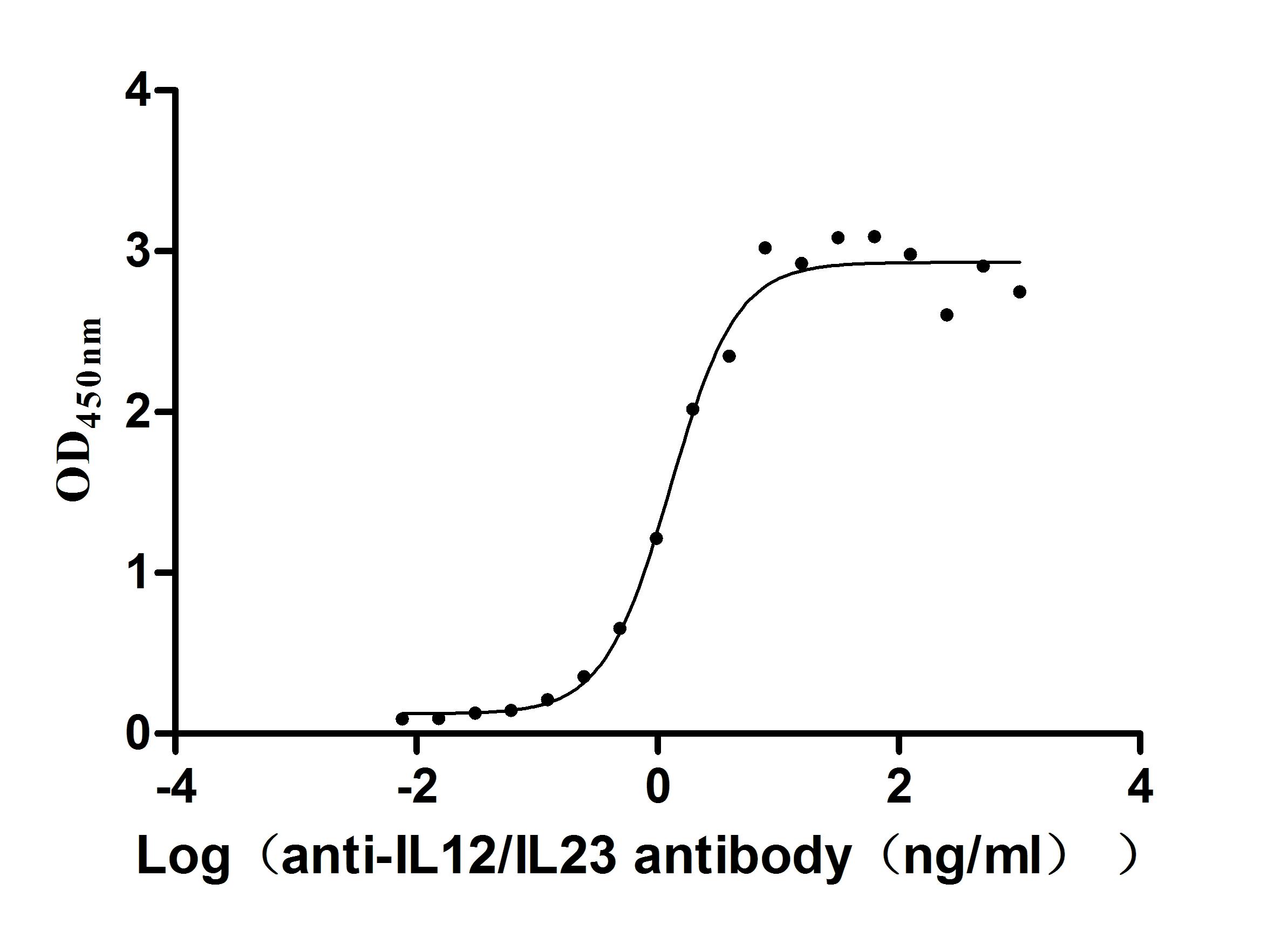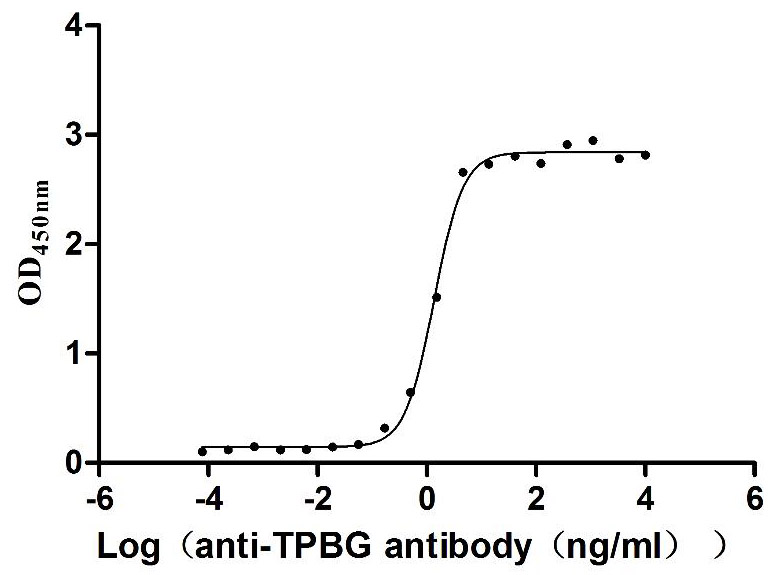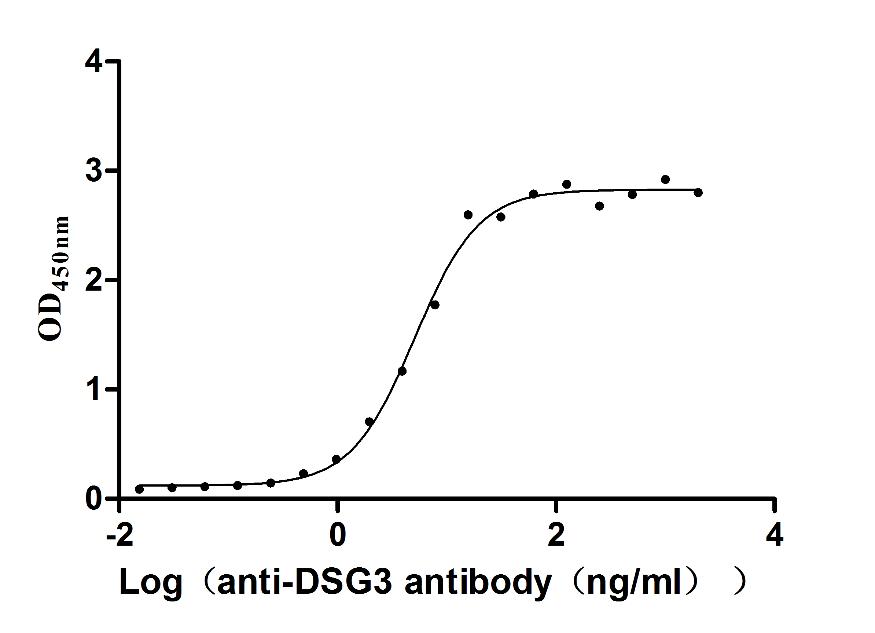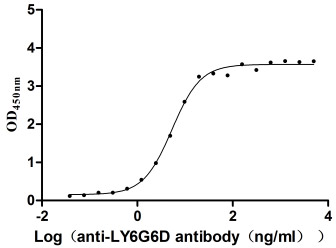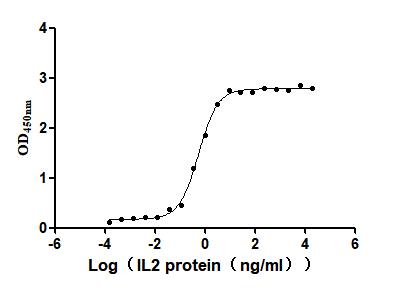Recombinant Rat Neurofilament light polypeptide (Nefl)
-
中文名稱:大鼠Nefl重組蛋白
-
貨號:CSB-BP015688RA
-
規(guī)格:
-
來源:Baculovirus
-
其他:
-
中文名稱:大鼠Nefl重組蛋白
-
貨號:CSB-EP015688RA-B
-
規(guī)格:
-
來源:E.coli
-
共軛:Avi-tag Biotinylated
E. coli biotin ligase (BirA) is highly specific in covalently attaching biotin to the 15 amino acid AviTag peptide. This recombinant protein was biotinylated in vivo by AviTag-BirA technology, which method is BriA catalyzes amide linkage between the biotin and the specific lysine of the AviTag.
-
其他:
-
中文名稱:大鼠Nefl重組蛋白
-
貨號:CSB-MP015688RA
-
規(guī)格:
-
來源:Mammalian cell
-
其他:
產(chǎn)品詳情
-
純度:>85% (SDS-PAGE)
-
基因名:Name:Nefl Synonyms:Nf68, Nfl
-
Uniprot No.:
-
別名:Nefl; Nf68; Nfl; Neurofilament light polypeptide; NF-L; 68 kDa neurofilament protein; Neurofilament triplet L protein
-
種屬:Rattus norvegicus (Rat)
-
蛋白長度:Full Length of Mature Protein
-
表達區(qū)域:2-542
-
氨基酸序列SSFSYEPYF STSYKRRYVE TPRVHISSVR SGYSTARSAY SSYSAPVSSS LSVRRSYSSS SGSLMPSLEN LDLSQVAAIS NDLKSIRTQE KAQLQDLNDR FASFIERVHE LEQQNKVLEA ELLVLRQKHS EPSRFRALYE QEIRDLRLAA EDATNEKQAL QGEREGLEET LRNLQARYEE EVLSREDAEG RLMEARKGAD EAALARAELE KRIDSLMDEI AFLKKVHEEE IAELQAQIQY AQISVEMDVS SKPDLSAALK DIRAQYEKLA AKNMQNAEEW FKSRFTVLTE SAAKNTDAVR AAKDEVSESR RLLKAKTLEI EACRGMNEAL EKQLQELEDK QNADISAMQD TINKLENELR STKSEMARYL KEYQDLLNVK MALDIEIAAY RKLLEGEETR LSFTSVGSIT SGYSQSSQVF GRSAYSGLQS SSYLMSARAF PAYYTSHVQE EQSEVEETIE ATKAEEAKDE PPSEGEAEEE EKEKEEGEEE EGAEEEEAAK DESEDAKEEE GGEGEEEDTK ESEEEEKKEE SAGEEQAAKK KD
-
蛋白標(biāo)簽:Tag?type?will?be?determined?during?the?manufacturing?process.
The tag type will be determined during production process. If you have specified tag type, please tell us and we will develop the specified tag preferentially. -
產(chǎn)品提供形式:Lyophilized powder
Note: We will preferentially ship the format that we have in stock, however, if you have any special requirement for the format, please remark your requirement when placing the order, we will prepare according to your demand. -
復(fù)溶:We recommend that this vial be briefly centrifuged prior to opening to bring the contents to the bottom. Please reconstitute protein in deionized sterile water to a concentration of 0.1-1.0 mg/mL.We recommend to add 5-50% of glycerol (final concentration) and aliquot for long-term storage at -20℃/-80℃. Our default final concentration of glycerol is 50%. Customers could use it as reference.
-
儲存條件:Store at -20°C/-80°C upon receipt, aliquoting is necessary for mutiple use. Avoid repeated freeze-thaw cycles.
-
保質(zhì)期:The shelf life is related to many factors, storage state, buffer ingredients, storage temperature and the stability of the protein itself.
Generally, the shelf life of liquid form is 6 months at -20°C/-80°C. The shelf life of lyophilized form is 12 months at -20°C/-80°C. -
貨期:Delivery time may differ from different purchasing way or location, please kindly consult your local distributors for specific delivery time.Note: All of our proteins are default shipped with normal blue ice packs, if you request to ship with dry ice, please communicate with us in advance and extra fees will be charged.
-
注意事項:Repeated freezing and thawing is not recommended. Store working aliquots at 4°C for up to one week.
-
Datasheet :Please contact us to get it.
相關(guān)產(chǎn)品
靶點詳情
-
功能:Neurofilaments usually contain three intermediate filament proteins: NEFL, NEFM, and NEFH which are involved in the maintenance of neuronal caliber. May additionally cooperate with the neuronal intermediate filament proteins PRPH and INA to form neuronal filamentous networks.
-
基因功能參考文獻:
- Furthermore, the effect of CaMKP on self-assembly of NFL was examined. Electron microscopy revealed that CaMKP markedly prevented NFL from forming large filamentous aggregates, suggesting that CaMKP-binding to NFL inhibits its filament association. These findings may provide new insights into a novel mechanism for regulating network formation of neurofilaments during neuronal differentiation. PMID: 27369073
- Data suggest that tetrahydropapaveroline (an endogenous catechol) causes oxidative stress resulting in astrocyte/neuronal cell death via generation of reactive oxygen species and modification/aggregation of NF-L (as in neurodegenerative diseases). PMID: 23228886
- In cultured cortical neurons, hamartin and tuberin co-localize with neurofilament light chain preferentially in the proximal to central growth cone region PMID: 12226091
- The amount of NF-L correlated with the morphological retinal and optic nerve damage in rats PMID: 15193534
- Increased neuritic degeneration was observed in neuronal cells overexpressing neurofilament light mutants. PMID: 15857389
- 68-kDa neurofilament light chain (NF-L) as identified as a binding protein of amino-terminal PH domain of PLC-gamma1. PMID: 16819285
- Rat pituitary cells from the proopiomelanocortin lineage nearly completely lack NF68 immunoreactivity. PMID: 16940710
- Data show that as a consequence of RhoA knockdown, the process which expresses neurofilament is markedly induced in C12 cells. PMID: 18556119
顯示更多
收起更多
-
亞細(xì)胞定位:Cell projection, axon. Cytoplasm, cytoskeleton.
-
蛋白家族:Intermediate filament family
-
組織特異性:Expressed in the dorsal root ganglion neurons (at protein level).
-
數(shù)據(jù)庫鏈接:
Most popular with customers
-
Recombinant Human Tumor necrosis factor ligand superfamily member 8 (TNFSF8), partial (Active)
Express system: Mammalian cell
Species: Homo sapiens (Human)
-
Recombinant Human R-spondin-1 (RSPO1), partial (Active)
Express system: Mammalian cell
Species: Homo sapiens (Human)
-
Recombinant Mouse Claudin-18.2 (Cldn18.2)-VLPs (Active)
Express system: Mammalian cell
Species: Mus musculus (Mouse)
-
Recombinant Human IL12B&IL12A Heterodimer Protein (Active)
Express system: Mammalian cell
Species: Homo sapiens (Human)
-
Recombinant Human Trophoblast glycoprotein (TPBG), partial (Active)
Express system: Mammalian cell
Species: Homo sapiens (Human)
-
Recombinant Human Desmoglein-3 (DSG3), partial (Active)
Express system: Baculovirus
Species: Homo sapiens (Human)
-
Recombinant Macaca fascicularis lymphocyte antigen 6 family member G6D (LY6G6D) (Active)
Express system: Yeast
Species: Macaca fascicularis (Crab-eating macaque) (Cynomolgus monkey)
-
Recombinant Human Interleukin-2 (IL2) (Active)
Express system: Mammalian cell
Species: Homo sapiens (Human)


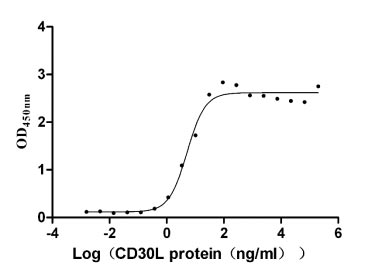
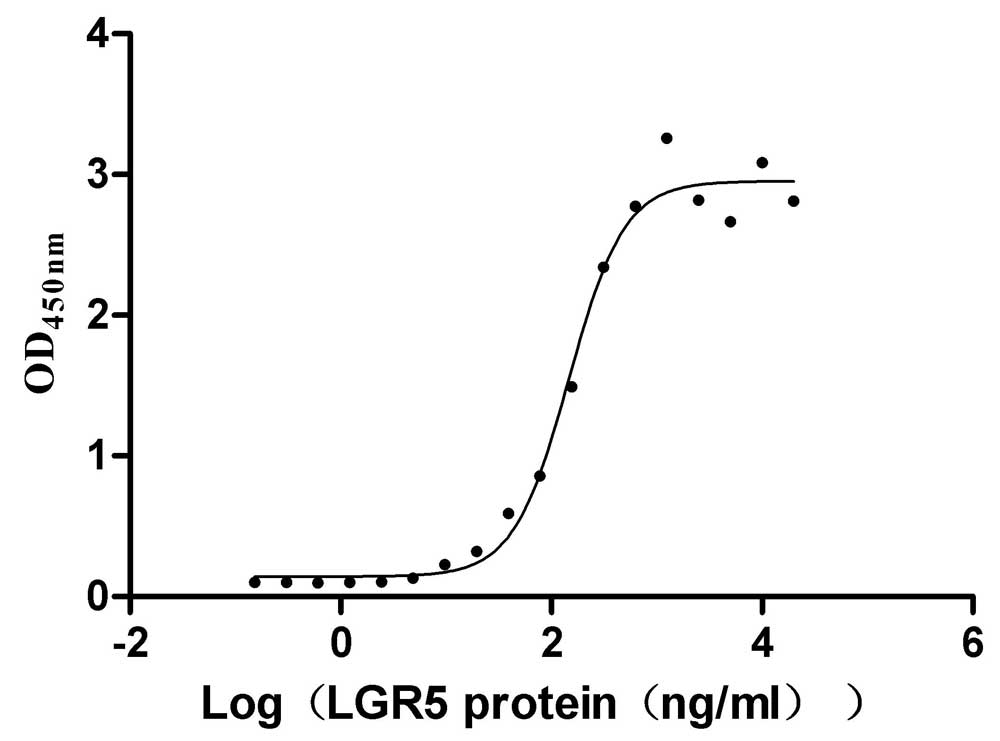
-AC1.jpg)
